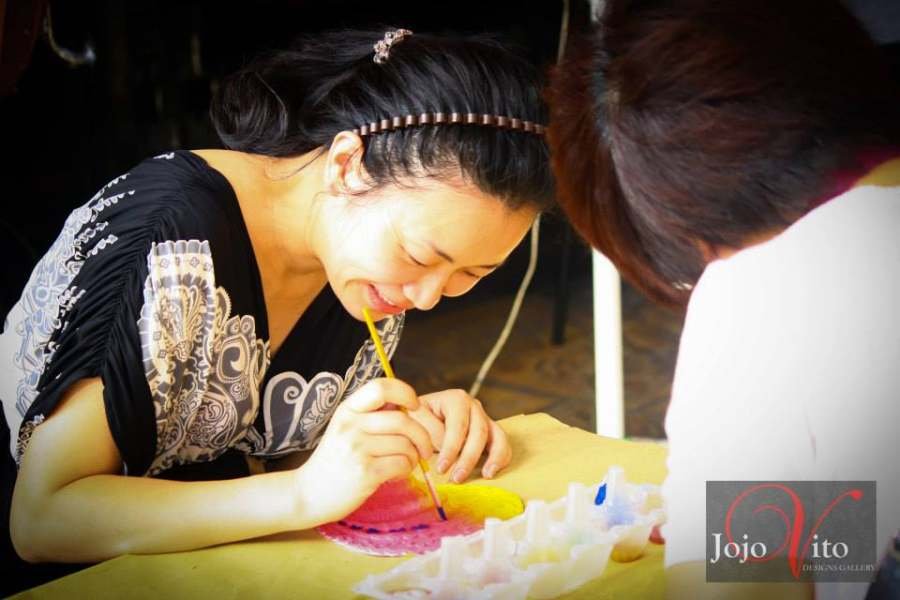
Sales Process
Table of Contents
Sales Process: Building Lasting Connections at Jojo Vito Designs Gallery
As an entrepreneur and the proud owner of Jojo Vito Designs Gallery in Bacolod City, I have had the unique opportunity to immerse myself in the vibrant sales world. Our gallery specializes in diverse items, from exquisite souvenirs to customized works like trophies and lamps. We cater to local and international clients, facing various customers with different needs and expectations. Through my experiences, I have come to appreciate the intricacies of the sales process, which consists of several key stages: prospecting, preparation, approach, presentation, handling objections, and closing. Each stage ensures we meet our sales goals and build lasting client relationships.

Understanding the Sales Process
The sales process is a structured approach that guides us through engaging potential customers.
It begins with prospecting and identifying potential clients interested in our products. For instance, I actively engage with visitors during our exhibits to gauge their interest in our offerings. This could involve networking at local events or promoting our gallery through social media. By showcasing our unique creations online, I can attract individuals who may not have discovered us.
Once I have identified potential customers, I move into the preparation phase. This involves researching prospects to better understand their preferences. For example, suppose someone shows interest in customized trophies for an event. In that case, I prepare by gathering information about their specific requirements and any previous work we’ve done that aligns with their needs. This preparation is crucial as it allows me to tailor my approach effectively.
The next stage is the approach, where I make initial contact with the prospect. Whether it’s a warm greeting at the gallery or a follow-up email after an exhibit, my goal is to create a welcoming atmosphere that encourages dialogue. Building rapport quickly is essential; trust is a significant factor in sales.

Presenting Our Creations [ Sales Process ]
Following the approach comes the presentation phase. Here, I showcase our items—explaining the craftsmanship behind our customized lamps or highlighting the unique features of our souvenirs. During one memorable exhibit that attracted local and international clients, I tailored my presentations to emphasize aspects of our products that would resonate with each audience segment. For international clients, emphasizing cultural significance and craftsmanship was key.
Handling Objections [ Sales Process ]
Despite my best efforts, objections are a natural part of the sales process. When prospects express concerns about pricing or product suitability, I view these moments as opportunities rather than setbacks. For instance, when a customer hesitated about purchasing a trophy due to budget constraints, I took the time to discuss alternative options that could still meet their needs without compromising quality. Listening actively and responding thoughtfully helped alleviate their concerns and maintain their interest.

Closing the Sale [ Sales Process ]
Finally, we reach the closing stage—a critical moment where all my efforts culminate in securing sales. Closing techniques can vary widely. Sometimes, it’s as simple as asking if they are ready to purchase and answering their questions. Other times, it requires more finesse—like offering a limited-time discount to encourage immediate action. In my experience, creating a sense of urgency can often motivate sales prospects to finalize their decision.

Prospecting Techniques [ Sales Process ]
Effective prospecting has been instrumental in driving traffic to our gallery. One technique I’ve found particularly useful is leveraging social media platforms to showcase our products and engage with potential customers directly. By sharing visually appealing posts of our items and behind-the-scenes glimpses of our creative process, I’ve attracted attention from individuals who may not have known about us otherwise. Networking events also play a significant role in my prospecting efforts. Attending local fairs and exhibitions allows me to meet potential clients face-to-face and introduce them to our offerings. These interactions often lead to meaningful conversations that can convert into sales.

Qualifying Prospects [ Sales Process ]
Qualifying prospects effectively is crucial for maximizing time spent on leads most likely to convert into sales. In my experience, this involves two key steps: soft qualifying and tricky qualifying. During the soft qualifying phase, I engage prospects in casual conversation to gauge their interest level and determine if they align with our offer. Questions like “What type of items are you looking for?” or “Have you attended any of our previous exhibits?” help me understand if there’s potential for a fit. Once I’ve established my initial interest, I settle into tricky qualifying. This involves more profound questions regarding budget, urgency, and decision-making authority. For instance, if someone expresses interest in custom trophies but seems unsure about moving forward, asking questions like “When do you need these by?” or “What budget do you have in mind?” helps clarify whether they are serious buyers or just browsing.

Conclusion
Navigating the sales process as an entrepreneur has been challenging and rewarding at Jojo Vito Designs Gallery. Each stage—from prospecting to closing—requires careful attention and adaptability based on customer interactions and feedback. My experiences have taught me that successful selling is not merely transactional; it’s about building relationships and understanding customer needs deeply. By honing my skills in each phase of the sales process and employing effective prospecting techniques while qualifying leads thoroughly, I’ve created meaningful connections with customers locally and internationally.
As you embark on your sales journey—whether through your own business or within another organization—remember that patience and persistence are critical to success in salesmanship. Embrace each interaction as an opportunity for growth and learning; after all, every sale begins with a conversation.
Through this journey at Jojo Vito Designs Gallery, I have learned that effective salesmanship is not just about closing deals; it’s about fostering connections that last beyond a single transaction—an ethos that continues to drive my passion for what I do every day.

More Stories
- Building Customer Relationships
- Ethics in Digital Marketing: A Guide in the Philippine Context
- Labor Relations at FishPro Manufacturing Corporation | Case Study
- Wage and Salary Administration at Golden Crust Bakery | A Case Study
- Performance Evaluation Dilemma at Innovatech Solutions | Case Study
- SWIMSUITS FOR WOMEN | FASHION GUIDE
- SKINCARE ROUTINE FOR OILY SKIN
- Spontaneity and Unfiltered Honesty: The Power of Authentic Expression
- Coffee Ground Exfoliation: Revive Your Skin with the Power of Nature
- Teacher-Student Affairs: Navigating Boundaries in Complex Relationships
- Bugana Beach and Dive Resort Sipalay | Fab Asian Lifestyle




